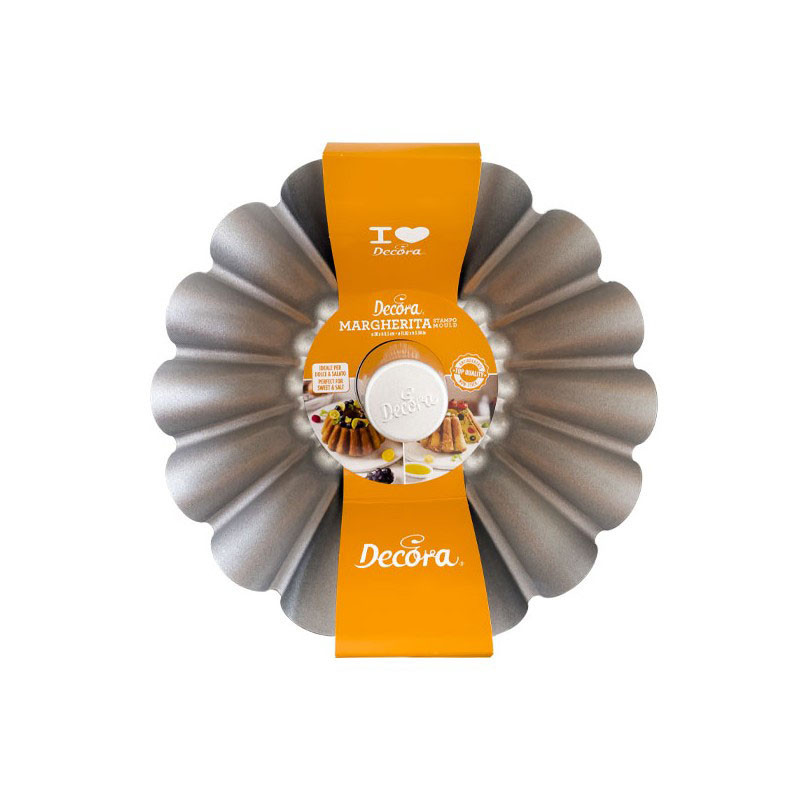



Surprise your loved ones with these delicious donuts. This baking pan made of metal with non-stick coating is easy to clean and very durable with proper cleaning. In no time at all 12 donuts are conjured up. Decorate your donuts with a delicious glaze and colored sugar sprinkles. Perfect for any party or just for snacking.
Data sheet
Love comes from the heart...and from your oven! Surprise your loved ones with this noble Gugelhupf. This metal baking pan is easy to care for and with proper cleaning is very durable. The mold allows for easy handling, as shaping the cake is facilitated by a non-stick coating. The Gugelhupf baking pan should be greased with butter and dusted with flour before filling with cake batter. After baking, you can wash the mold by hand.
The non-stick baking pan is not dishwasher safe! Please clean the mold by hand with mild detergent and dry immediately. Do not clean the surface with sharp objects or a scraper sponge.
Here you can find a cake recipe which is well suited for this baking pan:
Gugelhupf
400 g butter
380 g sugar
1 tbsp vanilla sugar
360 g egg
400 g white flour
3 tsp baking powder
80 g whole milk
1 pinch of salt
Chocolate drops or berries
Cream butter and sugar together, add the egg in sips. Then fold in the flour and baking powder. Finally, using a hand mixer, mix in the milk and salt, the baking drops or berries can be easily folded in.
The batter is then poured into the greased mold or sprayed with baking spray and baked at 160 °C for about 2 ½ hours. At the end, do the stick test, then let the cake cool slightly in the mold. Now the finished cake can be removed from the mold or turned out.
Sprinkled with a little powdered sugar, the cake is also ready to serve. Of course, you can then cut it open and put a delicious cream between the layers. For an especially noble look, you can also pour tempered couverture, cake glaze or a liquid chocolate ganache over the Gugelhopf. If you want to make something extra special, you can also use a Mirror Glaze in red. This way you are perfectly prepared for Valentine's Day.
A savory version is also appropriate for this mold. A bacon ring cake in this mold can also be served for breakfast, an aperitif or as a snack in between.
The mold can be cleaned by hand with dishwashing detergent, so the next treat can already be baked. So baking is fun!
It is not clear where the Gugelhupf comes from. A small town in Alsace, Ribeauville, celebrates the Kouglof festival on the second Sunday in June. Legends say that the Magi passed by there on their way back from Bethlehem and were given a cake in the shape of their turbans. Again, much later it is said that Marie Antoinette, an Austrian who later became Queen of France, brought the Gugelhupf from Austria to France. The name also brings confusion. For the gugel was a cloth worn around the head by peasant women, but was also a hood suitable for carrying. Hupf could come both from lupfen of the hood, that is, the process of toppling and lifting off the baking pan. Also the word "Hepfen" from the yeast dough could have originated from it.

Surprise your loved ones with these delicious donuts. This baking pan made of metal with non-stick coating is easy to clean and very durable with proper cleaning. In no time at all 12 donuts are conjured up. Decorate your donuts with a delicious glaze and colored sugar sprinkles. Perfect for any party or just for snacking.